
Mount Kenya National Park was in 1997 officially declared as a UNESCO World Heritage Site. The park is home to the great, famous and world-renowned Sirmon route to ascend Mount Kenya. The park has an area of 715 square kilometers. Most of the park is above the 3,000-metre contour line. The forest reserve has an area of 705 square Kilometres. Combined this makes the area of the UNESCO World Heritage Site 1,420 square Kilometres. Mount Kenya National Park was established in 1949. The purpose of establishing this park was to protect the region surrounding Mount Kenya. In April 1978 the area was designated a UNESCO Biosphere Reserve.
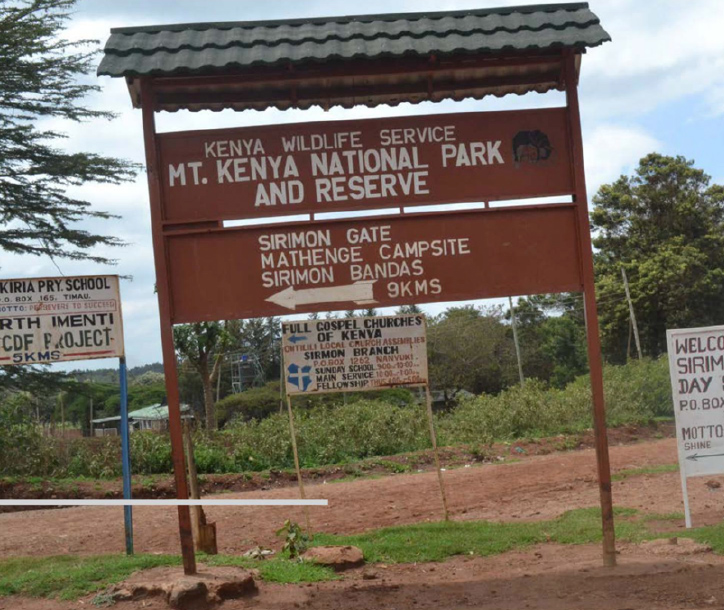
Sirmon Route to Mt. Kenya Peaks
To mountaineers, nature lovers, venturesome enthusiasts and those who like climbing mountains for leisure or for team building, climbing Mt. Kenya using Sirmon route can be an experience of its own kind. For climbers using this route, their journey begins at the Kenya Wildlife services (KWS) gate which is 9Km from the Timau-Nanyuki highway, about 3km from Timau town.
The KWS gate serves as the official entry point for the Sirmon route. From the gate, you will follow the track as it winds uphill through the forest, which becomes heath-land and after about 3-4 hours you get to Judimier Camp. From Judimier camp you will get to Old.
Moses Camp. As you proceed, you’ll cross Ontulili River and find yourself in the Moorland. As you get ahead, your next point will be Mackinders Valley from where there is a panoramic view. Our next point will be Shipton Camp. From Shipton camp you can now proceed to point Lenana, which is one of the Mt. Kenya’s three peaks. Other peaks are Nelion and Batian. Only expert and skilled mountaineers can climb the three peaks up to their tops.
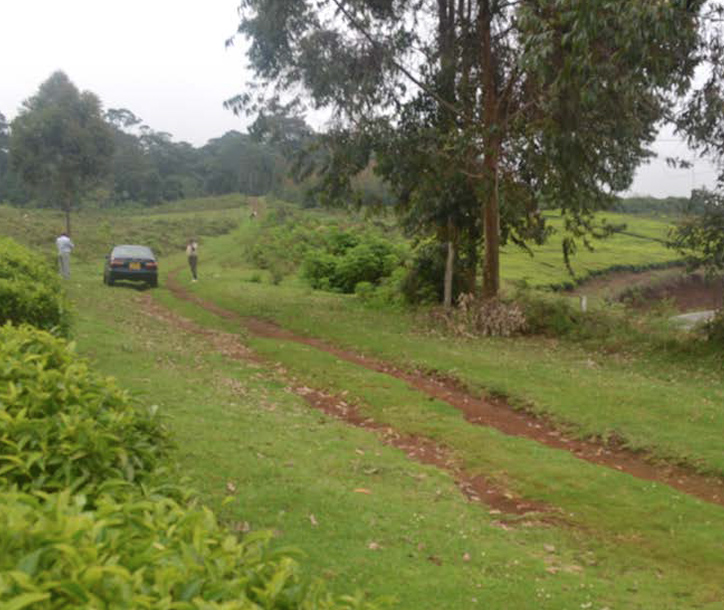
The Start Point Of Theemwe Route To Climb Mt. Kenya
Theemwe route in Meru County is the newest and easiest route to climb Mt. Kenya up to point Lenana. The route is in South Imenti in Murungurune at a place known as Chuguu.
The route starts a few meters from the edge of the forest, which is a few meters from the new tarmac road. The route has been said to be the easiest to climb Mt. Kenya by expert tour guides who have been guiding mountain climbing enthusiasts for a long time. At the forest edge, about a 100m from the tarmac road is the first campsite where people can camp over the night before ascending the mountain. The camp has a viewpoint to see all the Mt. Kenya peaks especially early in the morning when the sky is clear with no mist. Five kilometers from this first camp as you ascend the mountain is the Theemwe campsite and lodges. The campsite has bathrooms, toilets and piped water for Now Theemwe and Chogoria route join and as one proceed about 2km, one comes to Lake Elis. People can camp here and do fishing from the lake, which has brown trout fish. This is the last point where strong four-wheel drives can reach. From Lake Elis you proceed to Mintos ark, which is a small building and around that place there are two small lakes called Mintos. From Mintos ark you get to a place called square turn. This is where all the routes to climb Mt. Kenya from any part of the mountain meets. These routes are the Noru-Molo route from Nanyuki side, Sirimon route from Timau, Kamwiti route from Embu or Kirinyaga, Chogoria route and Theemwe route. From Square turn you can attempt to climb point Lenana and it is advisable only experts in mountain climbing who are advised to climb beyond point Lenana.
THEEMWE MINERAL SPRINGS
Theemwe mineral springs are adjacent to Theemwe campsite and found in a natural crater like basin surrounded by thick forest trees. The bottom of the crater is about 10acres and ringed by two rivers, which converge at the East end of the crater to form river Kaburia, which is a tributary of river Mutonga.
The mineral water springs are found at the bottom of the crater and they spring from volcanic rocks. There are several of these mineral springs and they are used for different purposes.
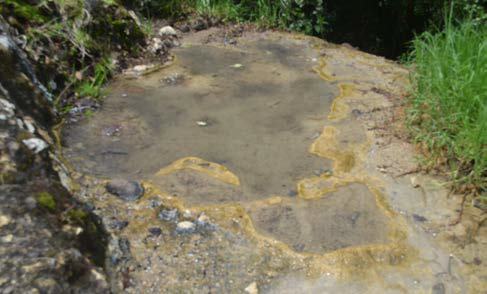
A Rock Within The Theemwe Crater Which Has Salty Water Bubling From Its Underneath.
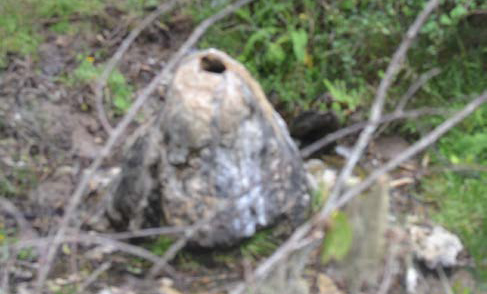
The Pot Look-Like Rock Within Theemwe Mineral Water Crater. Locals Call It Konguu-Ka-Theemwe, Meaning The Pot Of Theemwe Mineral Water Crater
The locals refer to the pot like rock as Konguu-ka-Theemwe, which when translated into English language means the pot of Theemwe salty springs. This pot like rock (Konguu-ka-Theemwe) has a deep pit filled with salty water, which is very cold and feels like is refrigerated. During the olden days, it was mythically believed that if you could deep your hand in the hole of the pot like rock whatever you picked from the bottom is what would follow you. For example, if one picked a substance looking like cow dung then they would be blessed with a lot of cows while if one picked a substance looking like goat or sheep dung then they would be a great goats and sheep owners. Few meters from the pot look-like rock, there is a giant fossilized footprint, which is said by locals to have belonged to “god” who created Mt. Kenya. Due to continuous weathering process over the years, this pot-like rock (Konguu-Ka-Theemwe has been shaped naturally to resemble the Meru traditional beer brewing pot (Kithirii)
ANNUAL HERITAGE MOUNT KENYA CLIMB
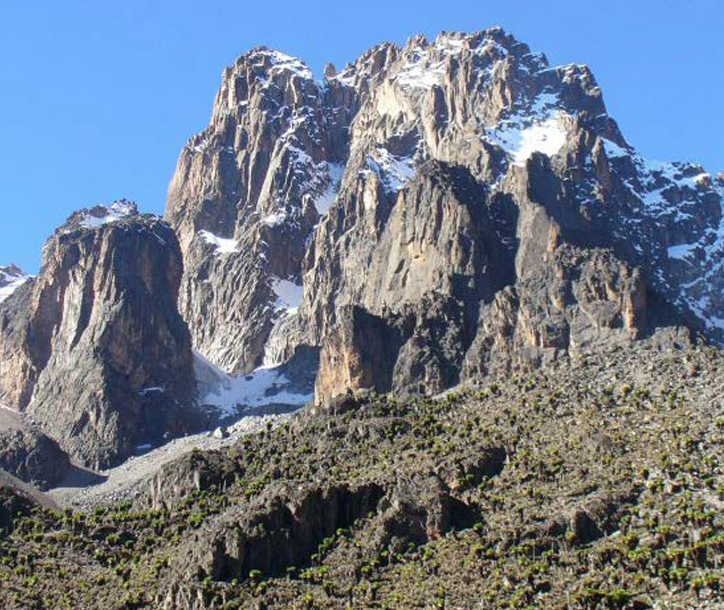
This an annually organized adventure climbs to Mt. Kenya, which was initiated by the directors and management of Heritage Hotel in Nkubu. The climb takes place in the month of August and is open to adventurers and mountain climbing enthusiasts. Besides this annual climb, Heritage hotel conducts climbs for guests through out the year.
The adventure starts at Heritage Hotel early in the morning of the designated date after having spent the night in the hotel. Climbers report in the hotel a day earlier usually on a Friday for inspection of their vehicles, which should be four wheel-drive vehicles. Those who without appropriate vehicles and wish to climb the mountain are provided with four wheel-drive vehicles by the hotel on reservation.
On the D-day, climbers assemble at the Hotel yard for briefing by mount climbing instructors and the adventure is flagged off. Then the climbers travel in a convoy up to Theemwe route where now the actual mountain climbing begins. They climb up to Lake Alice, which is the last point where vehicles can reach and at that point people take lunch.
After the climb, people get down to the hotel for an after climb evening party where the most exemplary climbers are rewarded.
There are other activities which climbers can involve themselves in as they climb the mountain. These activities include;
- Bird watching in the forest
- Fishing in various lakes in the mountain e.g. Lake Ellis and Lake Alice
- Watching and enjoying various mountain landforms like the billiard table look-like mountains
- Wildlife watching e.g. buffalos, colobus monkeys and sometimes elephants.
- Camping in various camp sites like Iraru and Theemwe camp sites
- Visiting Theemwe mineral water springs and the pot look-like rock (Konguu-ka-Theemwe)
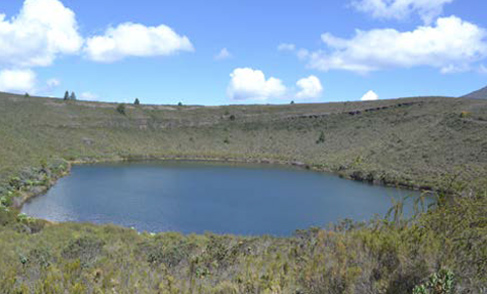
Rutundu hill within Mt. Kenya

Rutundu lake
MARANIA ROUTE TO CLIMB MT. KENYA
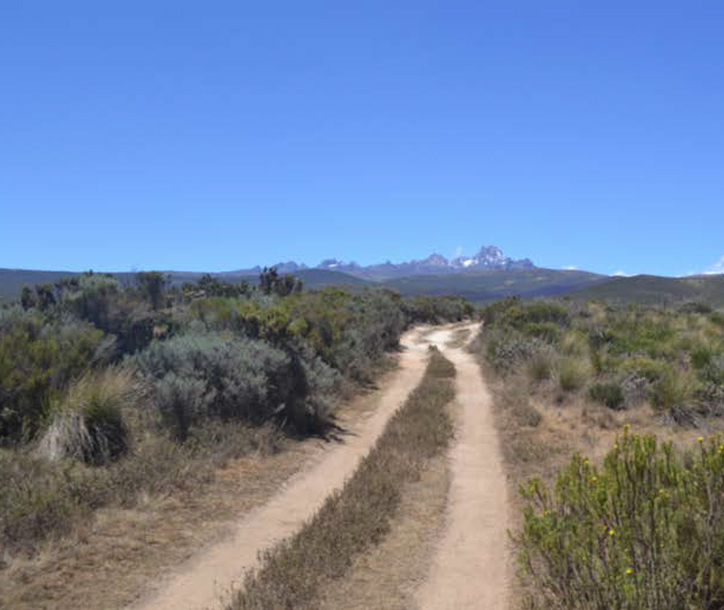
Marania Route to climb Mt. Kenya
Marania route to climb Mt. Kenya starts at the gate of Marania forest station in Ntirimiti sub-location of Kibirichia location. It roughly takes four days for one to climb to Lenana peak and back using this route to ascend Mt. Kenya.Point Lenana is the third highest peak of Mt. Kenya after point Nelion and point Batian. The route passes through the Mt. Kenya forest up to the Kenya school of Adventure and Leadership (KESAL) through the forest to the moorland zone of thick shrubs and grasses. From the moorland zone, the Mountain three peaks are clearly visible.
Interesting sites and important stops along the way to point Lenana include; numerous ridges and valleys, the Mbaru crater which depending on the time, can be seen teaming with various types of wildlife, such as Zebras, buffalos, elephants and mountain gazelles among others. Then there is solo camp which is located 8-10 hours hike from Marania gate,Rugushu stream near Solo camp and Major’s camp about 10 hours hike from Solo Camp. From the Major’s camp the trek to point Lenana is short. Other stops include; Minto’s camp which is accessed on the way back from Major’s camp on alternate route to climb down the mountain.
RUTUNDU LOG CABINS
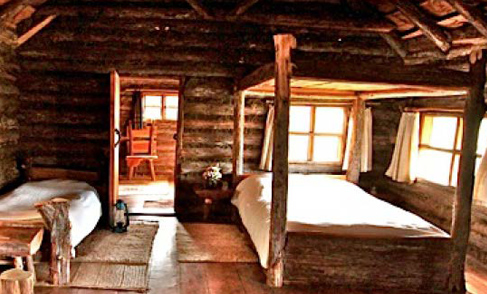
A Rock Within The Theemwe Crater Which Has Salty Water Bubling From Its Underneath.
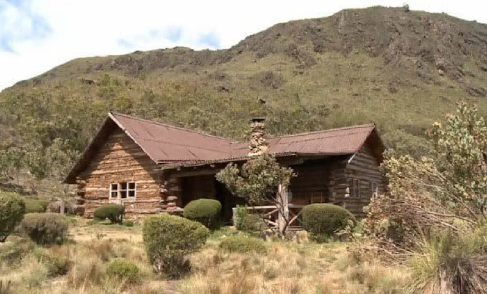
The Pot Look-Like Rock Within Theemwe Mineral Water Crater. Locals Call It Konguu-Ka-Theemwe, Meaning The Pot Of Theemwe Mineral Water Crater
Rutundu log cabins are found at the base of Rutundu hill, adjacent to Lake Rutundu on the Mt. Kenya moorland zone. Lake Alice is also found within the same zone.
The Lewa Wildlife conservancy manages Rutundu log cabins. It’s in these cabins where Prince William proposed to Kate Middleton. While at Rutundu cabins, one can engage in such activities as, fishing and canoeing at both at Lakes Rutundu and Alice.
